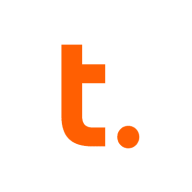

Teradata and Oracle Database Appliance are key competitors in the database platform category. Teradata seems to have the upper hand in robust data handling and analytics, while Oracle Database Appliance excels in easy deployment and high transactional performance.
Features: Teradata offers robust parallel processing abilities ideal for fast large data handling and in-depth analytics, praised for easy query tuning and data management. Oracle Database Appliance shines with its easy deployment and high transactional processing performance, integrating database and application layers. The system's virtualization options appeal to mid-size and large-scale enterprises, making it a reliable database environment.
Room for Improvement: Teradata could improve in pricing, cloud service integration, and user interface simplicity. Additionally, enhancing unstructured data handling and cloud capabilities is desired. Oracle Database Appliance users suggest better scalability, virtualization enhancements, and more flexible licensing, as well as reduced setup complexity and improved integrated cloud features.
Ease of Deployment and Customer Service: Teradata is deployable across various environments, including on-premises and cloud, and is noted for strong professional support, though response times could improve. Oracle Database Appliance is praised for straightforward deployment and consistent customer service, with occasional technical support delays.
Pricing and ROI: Teradata's high pricing matches its performance and advanced analytics, offering a justified investment for premium projects with positive ROI feedback despite initial costs. Oracle Database Appliance is similarly priced, valued for performance and simplicity in system integration, often preferred for reducing assembly complexity, and delivering substantial ROI by enhancing service efficiency.
At least fifteen to twenty percent of our time has been saved using Teradata, which has positively affected team productivity and business outcomes.
We have realized a return on investment, with a reduction of staff from 27 to eight, and our current return on investment is approximately 14%.
I would rate Oracle support nine or ten out of ten because you can always open a ticket and describe any problems, and the feedback is very quick.
The customer support for Teradata has been great.
The technical support from Teradata is quite advanced.
Customer support is very good, rated eight out of ten under our essential agreement.
All enterprise-grade analytics tools allow rapid scaling, making our business more competitive.
Whenever we need more resources, we can add that in Teradata, and when not needed, we can scale it down as well.
This expansion can occur without incurring downtime or taking systems offline.
Teradata's scalability is great; it's been awesome.
The workload management and software maturity provide a reliable system.
I find the stability to be almost a ten out of ten.
There is room for improvement in better integration with third-party tools, such as Power BI or Redshift.
For the cloud version, there could be better storage options or more storage for lower prices.
If the same thing were available in a web interface, that would be really helpful.
If Teradata could provide a list of certified experts, that would be fantastic.
Unlike SQL and Oracle, which have in-built replication capabilities, we don't have similar functionality with Teradata.
Oracle is on the higher end of the pricing spectrum, along with SAP.
Initially, it may seem expensive compared to similar cloud databases, however, it offers significant value in performance, stability, and overall output once in use.
Teradata is much more expensive than SQL, which is well-performed and cheaper.
We spent roughly $295,000 on setup costs.
Oracle excels in providing actionable insights and flexible access to data.
The automated provisioning feature helps speed up the database deployment process because you can use one command or option to resize all the disks or increase memory, depending on the occasion.
It has resulted in better performance improvement within our team as we now cover nine business units instead of 18, thanks to the data performance, which has increased data visibility and helped the enterprise achieve a higher rate of internal return on financials.
The first thing that I appreciate about Teradata is its multi-parallel processing. Whatever queries we execute on Teradata, they are blazingly fast, so it offers really fast connectivity.
The data mover is valuable over the last two years as it allows us to achieve data replication to our disaster recovery systems.
| Product | Market Share (%) |
|---|---|
| Teradata | 11.1% |
| Oracle Database Appliance | 5.2% |
| Other | 83.7% |


| Company Size | Count |
|---|---|
| Small Business | 20 |
| Midsize Enterprise | 9 |
| Large Enterprise | 15 |
| Company Size | Count |
|---|---|
| Small Business | 26 |
| Midsize Enterprise | 12 |
| Large Enterprise | 50 |
Oracle Database Appliance is the easiest and most affordable way for small or medium-size organizations to run Oracle databases and applications and is an ideal platform for remote and edge computing environments. Customers reduce Oracle Database deployment times and management workloads using a prebuilt integrated system with management automation. As demonstrated in IDC’s business value study (PDF), Oracle Database Appliance lets customers grow revenue and control costs, delivering up to a 498% return on investment (ROI) over five years.
Teradata is a powerful tool for handling substantial data volumes with its parallel processing architecture, supporting both cloud and on-premise environments efficiently. It offers impressive capabilities for fast query processing, data integration, and real-time reporting, making it suitable for diverse industrial applications.
Known for its robust parallel processing capabilities, Teradata effectively manages large datasets and provides adaptable deployment across cloud and on-premise setups. It enhances performance and scalability with features like advanced query tuning, workload management, and strong security. Users appreciate its ease of use and automation features which support real-time data reporting. The optimizer and intelligent partitioning help improve query speed and efficiency, while multi-temperature data management optimizes data handling.
What are the key features of Teradata?In the finance, retail, and government sectors, Teradata is employed for data warehousing, business intelligence, and analytical processing. It handles vast datasets for activities like customer behavior modeling and enterprise data integration. Supporting efficient reporting and analytics, Teradata enhances data storage and processing, whether deployed on-premise or on cloud platforms.
We monitor all Data Warehouse reviews to prevent fraudulent reviews and keep review quality high. We do not post reviews by company employees or direct competitors. We validate each review for authenticity via cross-reference with LinkedIn, and personal follow-up with the reviewer when necessary.